
Lumia 1020 and iPhone 12 Pro Max cameras
Let's start with a few specs:
| Lumia 1020 (2013) | iPhone 12 Pro Max (2020) |
|
Dedicated two-stage shutter button/launch key Single camera: 41 MP, f/2.2, 1/1.5", contrast-AF, OIS Xenon flash plus LED video light |
Three cameras: 12 MP, f/1.6, 1/1.9" (estimated), dual pixel PDAF, sensor-shift OIS |
It's clear that the Lumia is massively outgunned, but - as usual - the PureView oversampling and natural image processing should keep it competitive.
Notes:
- The Lumia 1020 shoots at its standard 5MP (leaving headroom for lossless 'PureView' zoom into the sensor and also getting the advantages of PureView oversampling and noise reduction). This does mean that framing isn't exact in the crop comparisons, but it is what it is - your eyes will have to look for detail differences a little harder than usual!
- The iPhone 12 Pro Max was shot using default processing, not the ProRAW option. If there's a need then I'll reshoot all of this with ProRAW. Comments welcome.
- All photos were taken on full auto and handheld, as a regular user would do. No tripods allowed!
Let's pit the results against each other, using our Famed Interactive Comparator (FIC). All 1:1 crops are at 900x500 for comparison, though I've put up the originals on my own server, for you to download if you want to do your own analysis.
| Note that the interactive comparator below uses javascript and does need to load each pair of images. Please be patient while this page loads, if you see a pair of images above each other than you've either not waited long enough or your browser isn't capable enough! You ideally need a powerful, large-screened tablet or a proper laptop or desktop. This comparator may not work in some browsers. Sorry about that. On Windows 10 Mobile, use the 'AAWP Universal' UWP app, which handles the comparator very competently (see the tips in the app's help screens) |
Test 1: Sunny landscape
Maybe 'sunny' is putting it too strongly - maybe weak and hazy winter sun! Here is the overall scene:

You can grab the original photos from the Lumia 1020 and iPhone 12 Pro Max (2020), for your own analysis.
To look at the images in more detail here, here are fairly central 1:1 crops, from the Lumia 1020 and then the iPhone 12 Pro Max, just wait to make sure the page has fully loaded and then use your mouse or trackpad pointer to compare the images:


This first shot is a good example of how to set expectations for this shootout. The 1020's shot is ultra natural but also relatively low in output resolution compared to 2021 phones, plus you have to hand it to the iPhone here for treading a very fine line between bringing out detail and over-exagerating edges. Though do see again my article on ProRAW for a way to get the best of both worlds.
[It's worth noting again that, yes, the Lumia 1020 does give the option of saving its 34/38MP JPG files - and for a landscape like this the extra resolution would be impressive. But you also lose all the PureView oversampling, you lose lossless zoom, and the files are too large to be shared around easily, especially on a such an old phone/chipset.]
Microsoft Lumia 1020 (2013): 9 pts; iPhone 12 Pro Max (2020): 10 pts
Test 2: Sunny landscape, zoomed
The same scene, this time zoomed to the 2.5x zoom PureView limit on the 1020 and the 2.5x telephoto on the iPhone (though again the different output resolutions affect the crop framing). You can grab the original zoomed photos from the Lumia 1020 and iPhone 12 Pro Max (2020), for your own analysis.
To look at the images in more detail here, here are fairly central 1:1 crops, from the Lumia 1020 and then the iPhone 12 Pro Max, just wait to make sure the page has fully loaded and then use your mouse or trackpad pointer to compare the images:

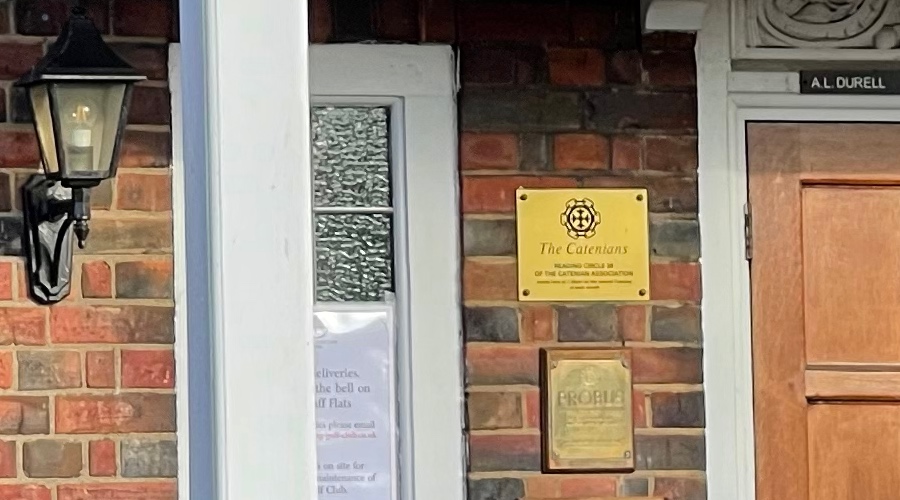
The edge enhancement (for JPG/HEIC) is again evident on the iPhone 12 Pro Max photo, perhaps even more so for this zoomed shot - some of the detail looks distinctly artificial. Yet at the same time the clarity is astonishing - you can see why I was so excited to go down the ProRAW route in parallel - and yes, I'm going to have to do a part 2 of this feature with all ProRAW shots. Watch this space!
The 1020's shot, as expected, remains natural and un-enhanced, but at the same time loses the noise reduction and purity that comes with oversampling. Still, not bad for a single camera-d phone from 2013!
Microsoft Lumia 1020 (2013): 8 pts; iPhone 12 Pro Max (2020): 9 pts
Test 3: Sunny macro
Trying to get as close as I could to fill the viewfinder with this leaf. On the Lumia 1020 I had to use some PureView zoom and keep the phone a little further away to get focus. You can grab the original photos from the Lumia 1020 and iPhone 12 Pro Max (2020), for your own analysis.
To look at the images here are scaled down (slight) crops, from the Lumia 1020 and then the iPhone 12 Pro Max, just wait to make sure the page has fully loaded and then use your mouse or trackpad pointer to compare the images:
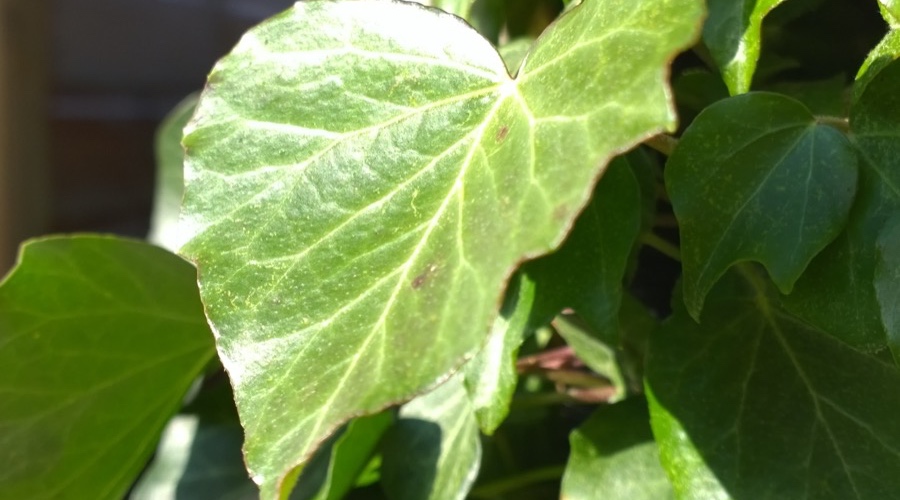

The 1020 doesn't do badly, but the sunlight reflections from the leaf are blown out. In contrast (pun intended), the modern multi-frame HDR in the iPhone 12 Pro Max makes light (pun ditto) work of the extra light, plus it nails focus with its advanced LiDAR system, while the 1020 has to rely on ancient contrast-based focussing (racking the lens in and out until maximum contrast is obtained).
Microsoft Lumia 1020 (2013): 8 pts; iPhone 12 Pro Max (2020): 10 pts
Test 4: Dusk
My standard suburban scene, shot at dusk, with light levels fading fast and darker to my eyes than the scene below implies... Here is the overall scene:

You can grab the original photos from the Lumia 1020 and iPhone 12 Pro Max (2020), for your own analysis.
To look at the images in more detail here, here are fairly central 1:1 crops, from the Lumia 1020 and then the iPhone 12 Pro Max, just wait to make sure the page has fully loaded and then use your mouse or trackpad pointer to compare the images:

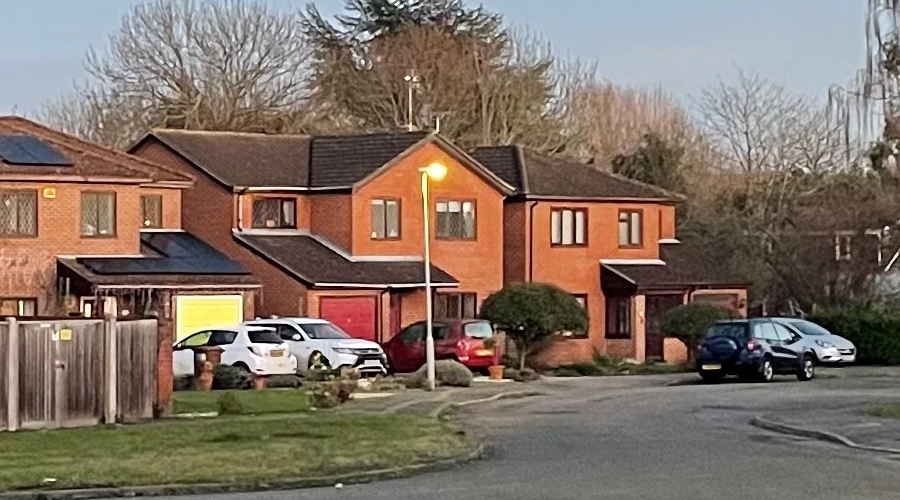
This is an example where the iPhone 12 Pro Max's default (HEIC/JPG) processing gets things all wrong. If you think the right/iPhone crop is better then you're wrong. It's stuffed with crowd-pleasing edge enhancement that seems at its worst in low light, as here. Even with its drastically lower outut resolution, the Lumia 1020's shot has just as much real detail, without any of the digital over-egging.
Microsoft Lumia 1020 (2013): 10 pts; iPhone 12 Pro Max (2020): 8 pts
Test 5: Low light zoom
An interesting test scene, at night, looking into a lit-up library. I was a good 20m away, so used max lossless zoom on each phone camera (obviously the 1020 loses its oversampling this way - though does manage a 1/17s handheld exposure, but the iPhone wins out by still being able to use its multi-frame night mode). Here is the overall scene:

You can grab the original zoomed photos from the Lumia 1020 and iPhone 12 Pro Max (2020), for your own analysis.
To look at the images in more detail here, here are fairly central 1:1 crops from the zooms, from the Lumia 1020 and then the iPhone 12 Pro Max, just wait to make sure the page has fully loaded and then use your mouse or trackpad pointer to compare the images:


Yes, there's the trademark (default) edge enhancement from the iPhone, but its photo is pretty damn clean and clear. Even zoomed, and even at 1:1 crop, book spines and signs are clearly readable. The 1020 does what it can with a single long exposure, but without the PureView oversampling there are noise and artefacts galore. Still, this does show 7 years of phone imaging progress, eh?
Microsoft Lumia 1020 (2013): 7 pts; iPhone 12 Pro Max (2020): 10 pts
Test 6: Night snap
The Lumia 1020 used to be king of the night. Back when the competition was producing black rectangles! Things have moved on now, thankfully. Here's a smart silver car at night, lit only by a handful of car park lamps. Here is the overall scene:
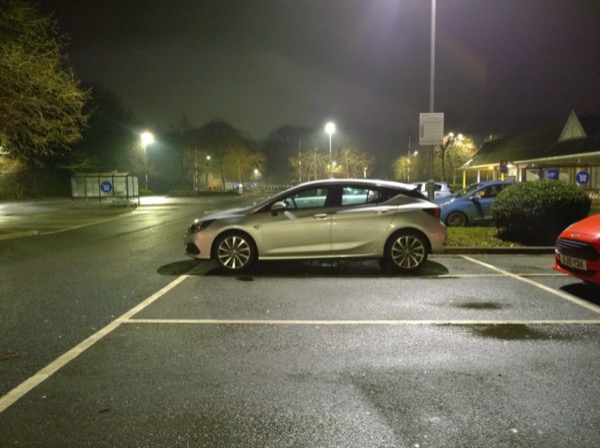
You can grab the original photos from the Lumia 1020 and iPhone 12 Pro Max (2020), for your own analysis.
To look at the images in more detail here, here are fairly central 1:1 crops, from the Lumia 1020 and then the iPhone 12 Pro Max, just wait to make sure the page has fully loaded and then use your mouse or trackpad pointer to compare the images:

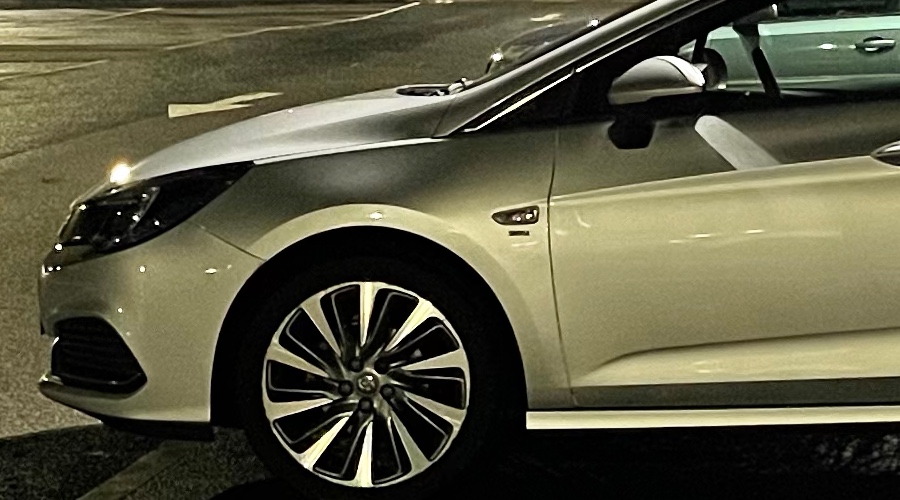
Yet again it's possible to declare the 1020 the winner, as having less noise and purer edges - but there's also more genuine detail in the iPhone image by virtue of the higher resolution, while its photo screams off the screen more as clearer. Yes, it's a little artificial if you look closely, but even at 1:1 here it's tough to see actual defects as a result.
You know what? I'm declaring a draw here - I like technical aspects from both images!
Microsoft Lumia 1020 (2013): 9 pts; iPhone 12 Pro Max (2020): 9 pts
Test 7: Night, night, night
Same car park, different scene, with extremes of light and dark. You can grab the original photos from the Lumia 1020 and iPhone 12 Pro Max (2020), for your own analysis.
Here are scaled crops, from the Lumia 1020 and then the iPhone 12 Pro Max, just wait to make sure the page has fully loaded and then use your mouse or trackpad pointer to compare the images:
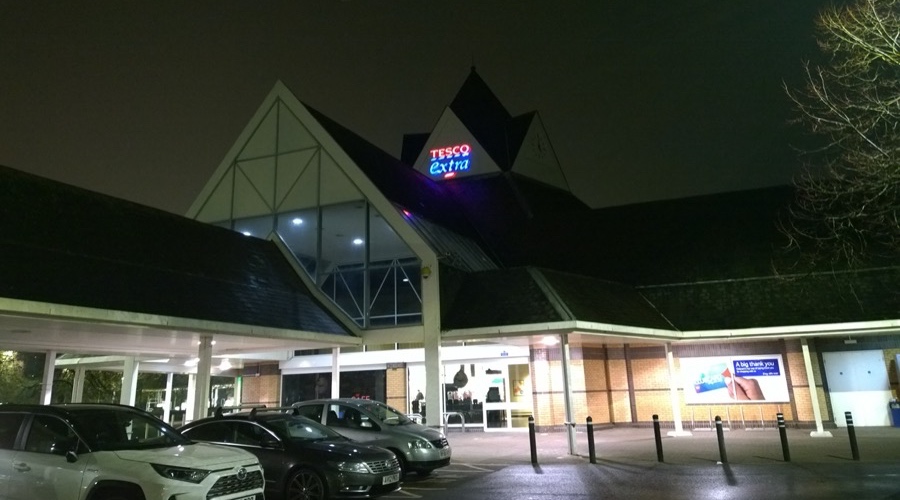
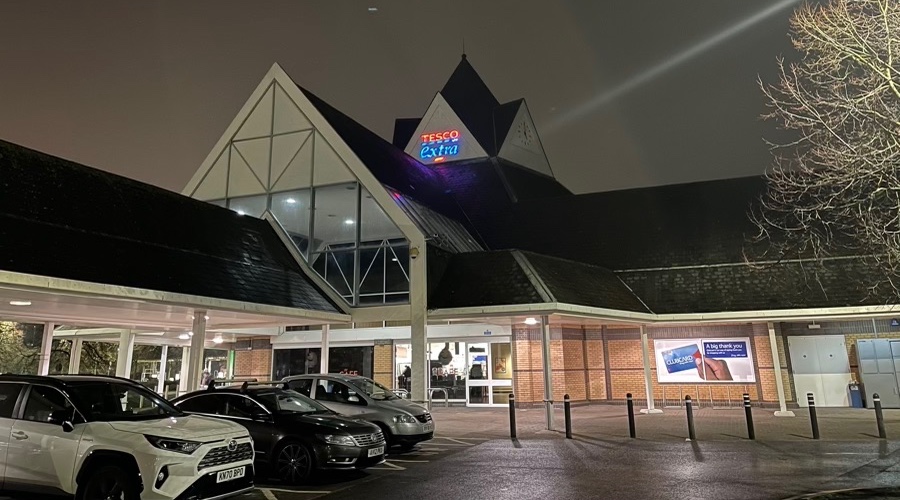
What would have been a miracle in 2013 is now outclassed by modern processing. OIS, multi-frame HDR, frame alignment, and so on mean that almost any phone camera can now shoot in the dark, and the dynamic range here from the iPhone 12 Pro Max is stunning. It's hard to take a bad photo - everything's handled automatically, whatever the conditions. Although the iPhone shot is arguably too light, in that the sky really wasn't that grey, the fact that nothing is blown out and that there's detail across the frame is just very impressive.
Microsoft Lumia 1020 (2013): 8 pts; iPhone 12 Pro Max (2020): 10 pts
Test 8: Sign zoom
The same scene, but that illuminated sign on the roof attracted my attention. After all, something that high up needs camera zoom, since you can't just walk to get (much) closer. Applying maximum PureView zoom (2.5x) on the 1020 and 5x (half optical, half digital) on the iPhone 12 Pro Max, you can grab the original zoomed photos from the Lumia 1020 and iPhone 12 Pro Max (2020), for your own analysis.
To look at the images in more detail here, here are fairly central 1:1 crops, from the Lumia 1020 and then the iPhone 12 Pro Max, just wait to make sure the page has fully loaded and then use your mouse or trackpad pointer to compare the images:

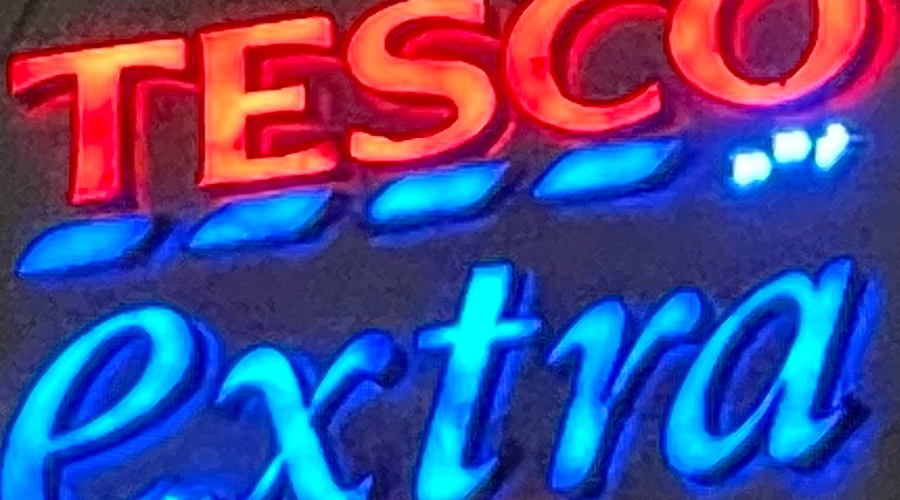
True, I could have tapped on the sign on the 1020 screen to expose the sign better - sorry about that, and I'll cut the 1020 a little slack here. But still - the extra resolution, the extra interpolative zoom, the telephoto lens, all combine to produce stunning detail from the iPhone 12 Pro Max. At the expense of a little noise, but you can see the individual light elements behind the letters.
Microsoft Lumia 1020 (2013): 7 pts; iPhone 12 Pro Max (2020): 9 pts
Test 9: More night HDR
The lighting challenge continues - again, I'm picking scenes and detail that should be hard for any phone camera to nail! Shooting into a street lamp, with loads of natural tree detail. You can grab the original photos from the Lumia 1020 and iPhone 12 Pro Max (2020), for your own analysis.
To look at the images side by side, here are scaled crops, from the Lumia 1020 and then the iPhone 12 Pro Max, just wait to make sure the page has fully loaded and then use your mouse or trackpad pointer to compare the images:

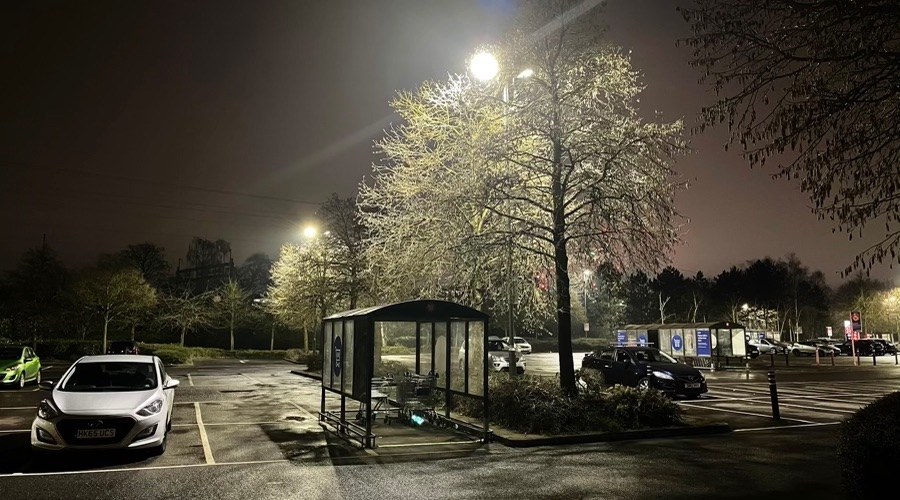
Both shots are pretty good and the iPhone obviously manages the extremes of light best, but I can't help but prefer the natural qualities of the Lumia 1020. See the silver Hyundai on the left of frame, for example - the iPhone's default processing has this sharpened and colour-enhanced to be white. (If you don't believe me, look up the number plate online.)
Microsoft Lumia 1020 (2013): 9 pts; iPhone 12 Pro Max (2020): 8 pts
Test 10: Indoor mood
A low light indoor 'still life' shot. With the light deliberately behind the detailed subject. An ultimate test of light gathering ability and stabilisation. Here is the overall scene:

You can grab the original photos from the Lumia 1020 and iPhone 12 Pro Max (2020), for your own analysis.
To look at the images in more detail here, here are fairly central 1:1 crops, from the Lumia 1020 and then the iPhone 12 Pro Max, just wait to make sure the page has fully loaded and then use your mouse or trackpad pointer to compare the images:
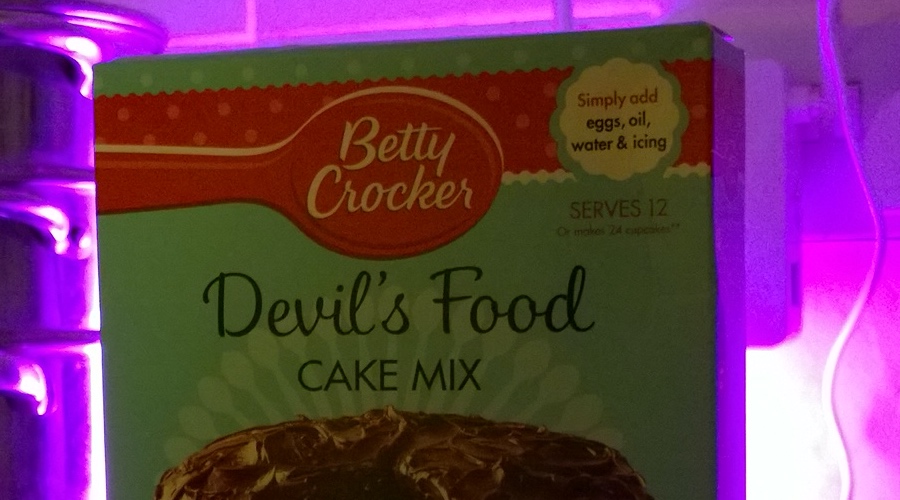

This is the 7-to-1 (or so) Nokia PureView oversampling in action - look at the colours, the lack of noise, the purity on the cake mix packet in the Lumia 1020 shot. It went to 1/8s, which with the OIS and huge sensor, is enough to give it a win here. The iPhone 12 Pro Max activated its Night mode and is more contrasty, but it's also noisier and less colourful. An almost impossible subject and a narrow win for the seven year old phone.
Microsoft Lumia 1020 (2013): 9 pts; iPhone 12 Pro Max (2020): 8 pts
Bonus points here for what would have been Test 11 - the same scene as above but with flash forced on. Except that even forced 'on', the iPhone 12 Pro Max refused to actually fire it, its algorithms preferring the regular Night mode instead. Maybe it's right, maybe it's wrong, but I couldn't waste this opportunity to revel in the Lumia 1020's proper Xenon flash once again. You can grab the original photo from the Lumia 1020 for your own analysis.
To look at the images in more detail here, here are fairly central 1:1 crops, from the Lumia 1020 and then the iPhone 12 Pro Max, just wait to make sure the page has fully loaded and then use your mouse or trackpad pointer to compare the images:
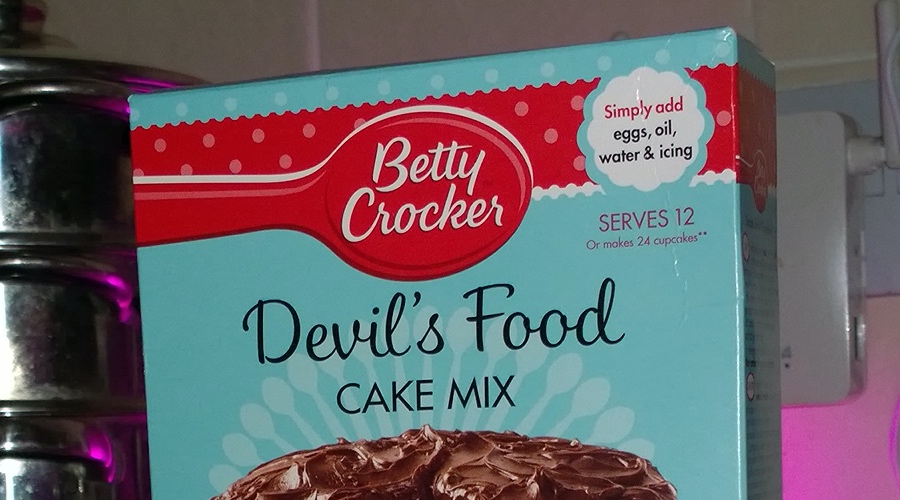

Wow. Remind me again why modern smartphones can't have Xenon flash? As to scoring, it's tough to mark the iPhone too far down when I couldn't even test its LED flash in this scene. So I'm going for bonus points alone:
Microsoft Lumia 1020 (2013): 4 bonus pts
Verdict
For the record, the scores add up as:
- iPhone 12 Pro Max (2020): 91 pts (/100)
- Lumia 1020 (2013): 88 pts
Which I think is a narrow but fair margin. The Lumia 1020 (with the 808) may have been in the vanguard of computational photography, but the concept has been brought right up to date in the time domain now (Pixels, iPhones, and the like), with as many as 10 or 20 photos aligned and combined for every photo actually captured. Add in a genuine telephoto lens, a wide angle lens (not covered here), and massive chipset speeds to crunch through all the data, and the iPhone 12 Pro Max takes the win, even if not by as much of a margin as you'd expect for a 7 or 8 year difference in evolution. (Take any other 2013 smartphone and put its camera through the tests here and it would be scoring in the 50s or below!)
In part 2 of this comparison, I'll be picking a similar range of tough subjects, but this time shooting in the much-vaunted ProRAW mode of the iPhone 12 Pro series - which should match the Lumia for purity, while still offering all the HDR smarts and, as a result, should produce more of a winning margin. Watch this space.
